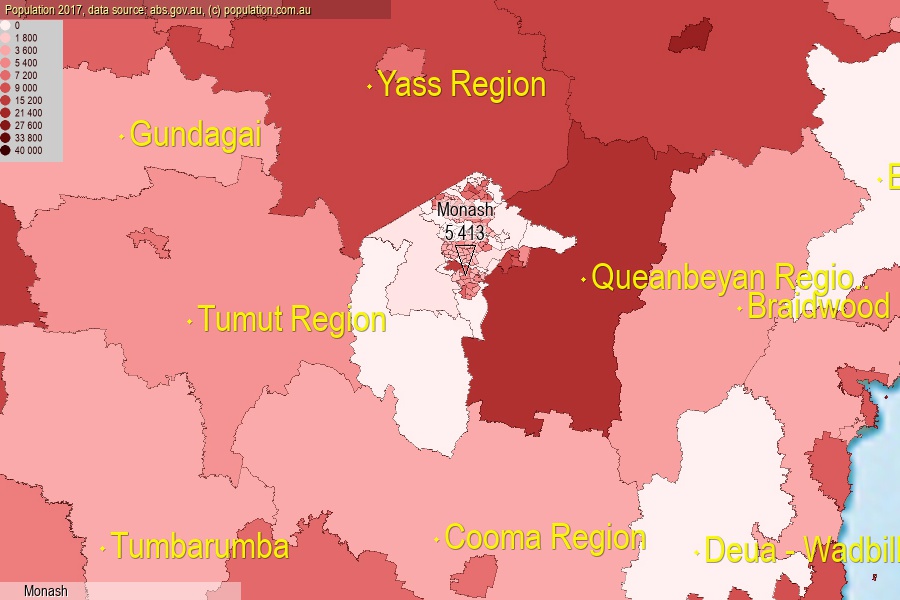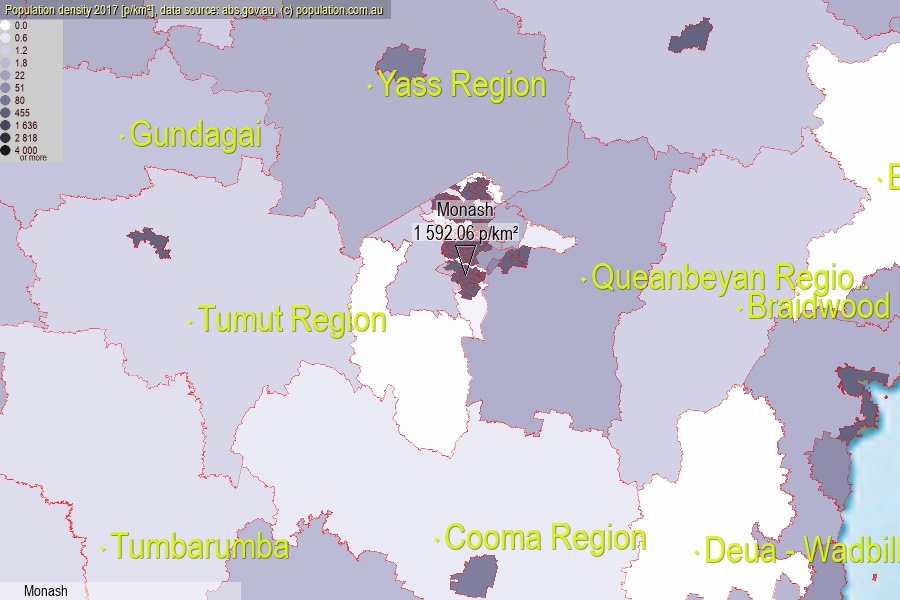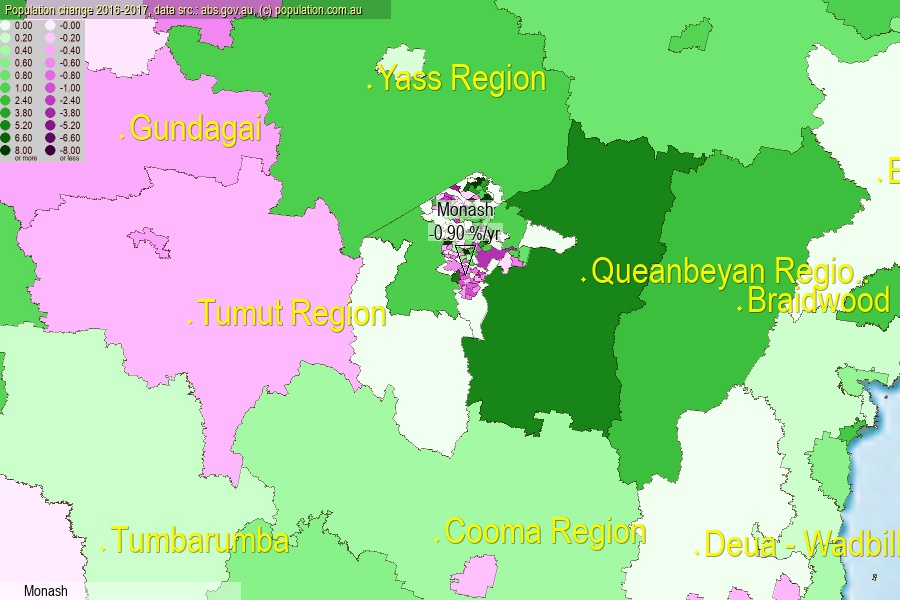 population.com.au
population.com.auLast official estimated population of Monash (as Statistical Area Level 2) was 5 413 people (on 2017-06-30)[2]. This was 0.02% of total Australian population and 1.291% of ACT population. Area of Monash is 3.40 km², in this year population density was 1 592.06 p/km² . If population growth rate would be same as in period 2016-2017 (-0.9%/yr), Monash population in 2025 would be 5 036. [0]



Click to enlarge. Monash is located in the center of the images.
Population [people], population density [p./km²] and population change [%/year] [2]
View borders » (new window) [4]
[1991-1992] +32.32 %/Yr.
[1992-1993] +3.64 %/Yr.
[1993-1994] +1.72 %/Yr.
[1994-1995] +0.44 %/Yr.
[1995-1996] +2.40 %/Yr.
[1996-1997] +0.12 %/Yr.
[1997-1998] -0.48 %/Yr.
[1998-1999] +0.02 %/Yr.
[1999-2000] +1.09 %/Yr.
[2000-2001] +0.94 %/Yr.
[2001-2002] -1.62 %/Yr.
[2002-2003] -0.70 %/Yr.
[2003-2004] -2.11 %/Yr.
[2004-2005] -1.52 %/Yr.
[2005-2006] -0.66 %/Yr.
[2006-2007] -0.72 %/Yr.
[2007-2008] -0.55 %/Yr.
[2008-2009] -0.09 %/Yr.
[2009-2010] +0.05 %/Yr.
[2010-2011] -0.41 %/Yr.
[2011-2012] +0.18 %/Yr.
[2012-2013] -0.75 %/Yr.
[2013-2014] -1.47 %/Yr.
[2014-2015] -0.65 %/Yr.
[2015-2016] -0.16 %/Yr.
[2016-2017] -0.90 %/Yr.
[0] Calculated with linear interpolation from officially estimated population
[1] Read more about SA2 and Australian Statistical Geography Standard (ASGS) on abs.gov.au
[2] Population data from Australian Bureau of Statistics (Population and density: 2017; change: 2016-2017)
[3] Digital Boundaries: Australian Statistical Geography Standard (ASGS) 2016.
[4] Border coordinates are simplifyed using Ramer-Douglas-Peucker algorithm.